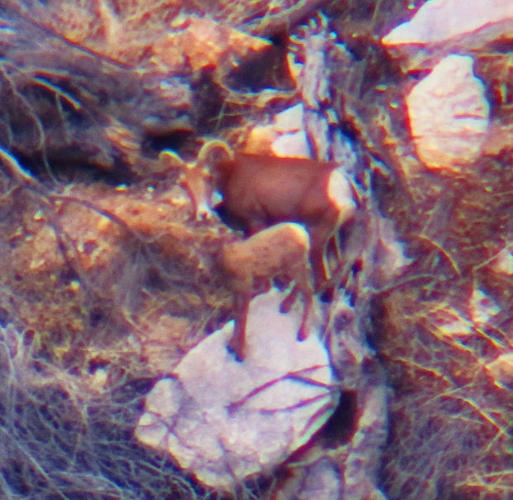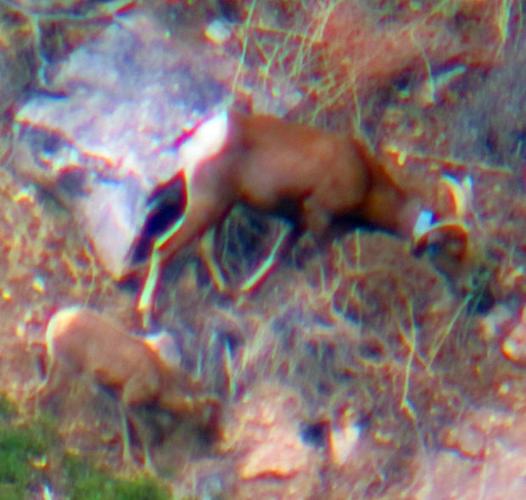Two apparently healthy lambs have been born to bighorn sheep that were released in the Catalina Mountains north of Tucson last November, state wildlife officials reported Wednesday.
The lambs were sighted last week by a biologist with the Arizona Game and Fish Department, who took photos of one of the lambs with its mother.
“This is another important milestone in the Santa Catalina bighorn sheep restoration project,” said Raúl Vega, regional supervisor for the department. “Our goal is to restore a healthy, viable and self-sustaining population of desert bighorn sheep to the range that coexists with an equally healthy native predator population in a naturally functioning ecosystem.”
Thirty-one bighorns, captured in mountains near Yuma, were brought to the Catalinas in an effort to rebuild a herd that disappeared from the range in the 1990s.
Ten of the bighorns have died, most being the victims of mountain lions. Two mountain lions have been killed for preying on sheep.
PHOTOS FROM A DISTANCE
The biologist’s photos show the first lamb and ewe that were seen, said Mark Hart, spokesman for the department. “A second lamb and ewe were also spotted.”
Hart said the photos were taken from the ground at a far distance using a high-magnification spotting scope and handheld camera. It was important to remain at a distance to minimize disturbance to the sheep.
The lamb in the pictures was photographed on Feb. 4, Hart said. The second lamb was seen on Feb. 6.
Mike Quigley of the Wilderness Society, who serves on a project advisory committee, said, “These little lambs are the first Catalina-born desert bighorn sheep in nearly 25 years. This used to be a common event and hopefully will be again.”
Another advisory committee member, Trica Oshant Hawkins of the Arizona Wilderness Coalition, called the lamb sightings “great news and a timely reminder of the importance of trail restrictions currently in place within the Coronado National Forest’s Bighorn Sheep Management Area.” The restrictions prohibit dogs in the area at all times and hiking more than 400 feet off trail during the bighorn lambing season from January through April.
“We’re hopeful that other ewes will successfully birth lambs over the coming months,” Oshant Hawkins said. “The January-through-April lambing season is a very sensitive time for bighorn sheep, so it’s really critical that people do not hike off trail or take their dogs into the area.”
Time will tell if the lambs will survive, but the ewes apparently chose good birthing sites, Hart said.
“Ewes will pick the safest location possible to give birth,” he said. That’s what you’re seeing in the photos — rugged, rocky terrain where she can birth the lamb.”





